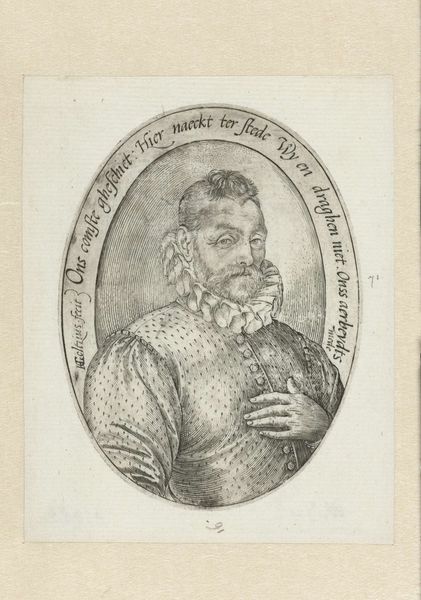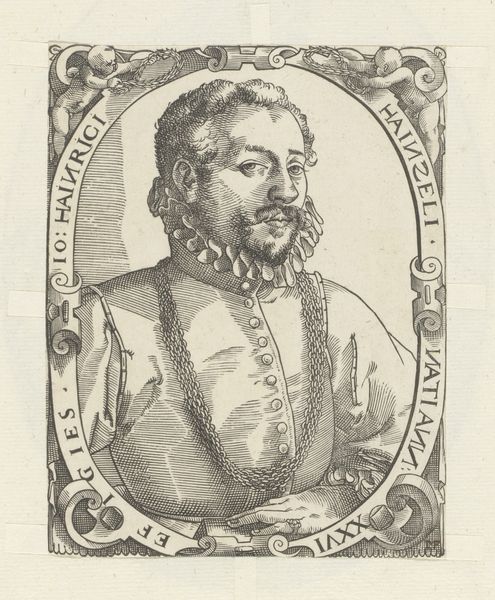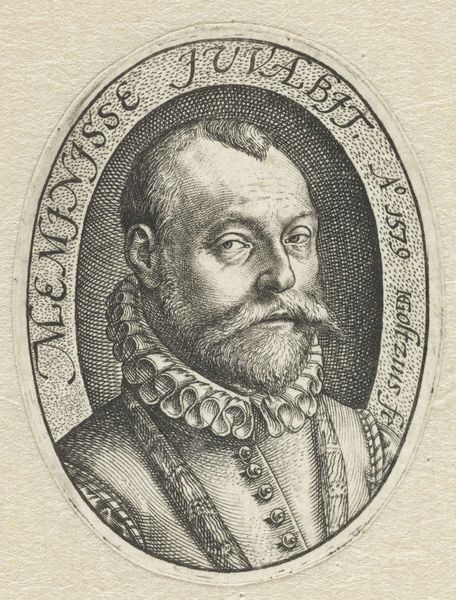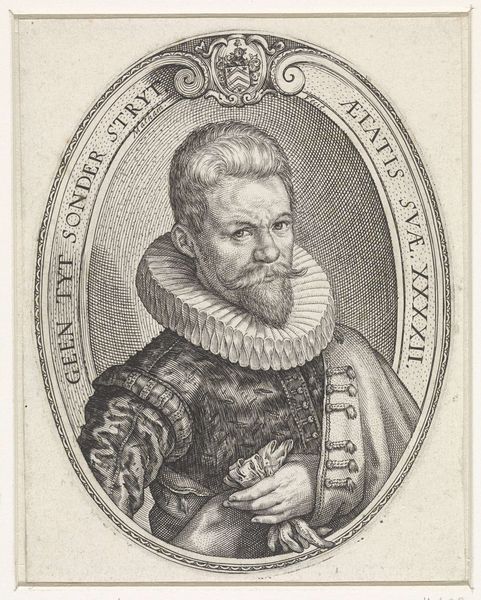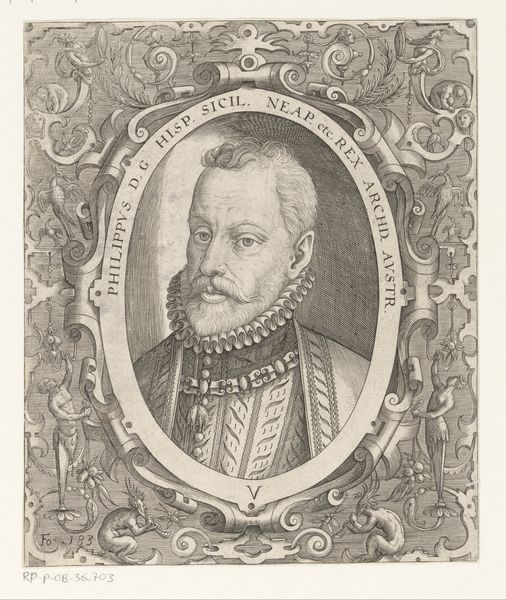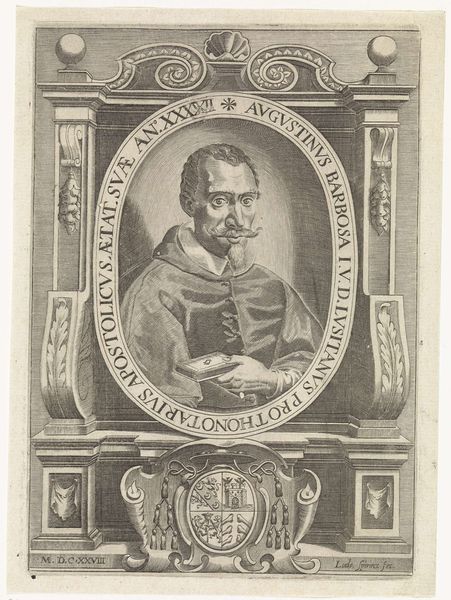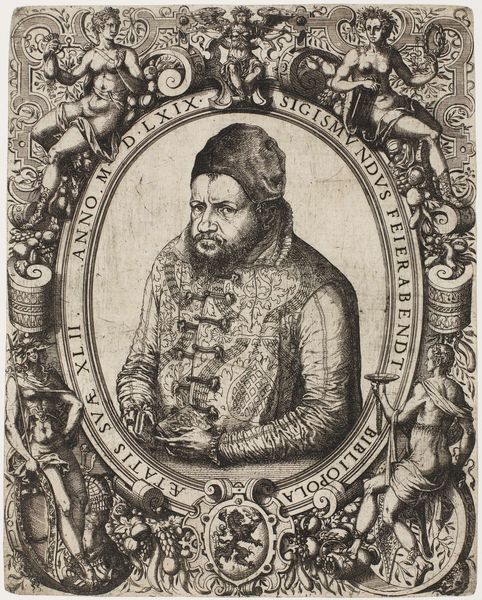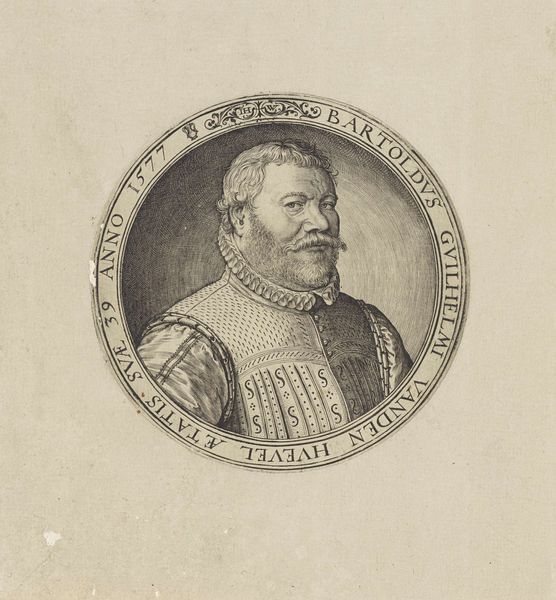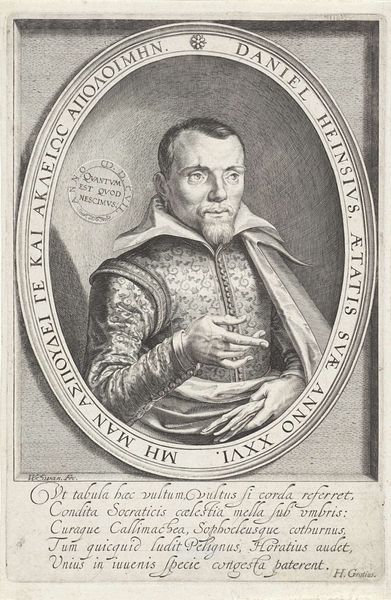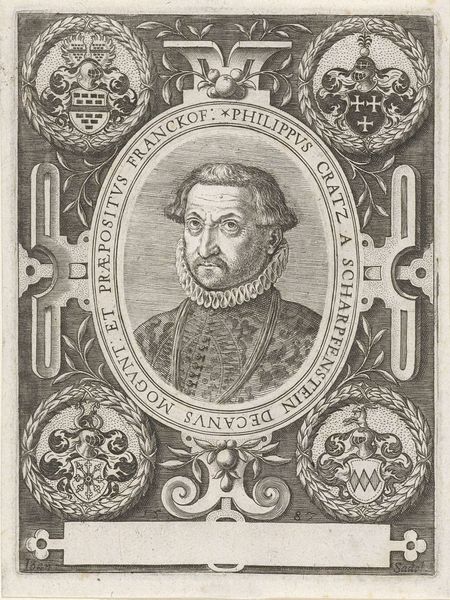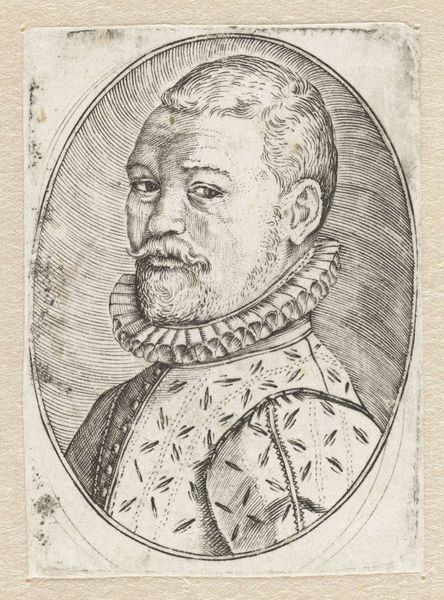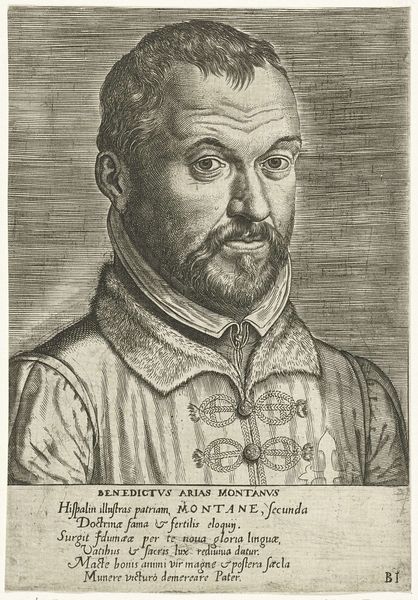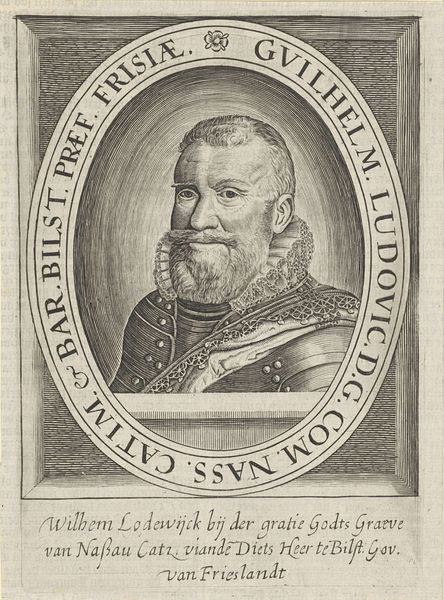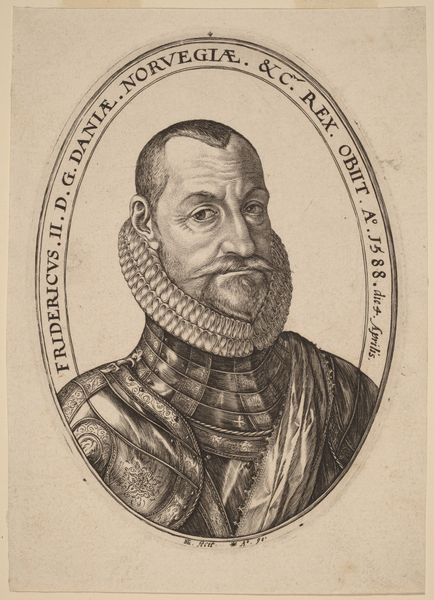
Portret van een 32-jarige man tegen de achtergrond van een eikenblad 1579
0:00
0:00
print, engraving
#
portrait
# print
#
old engraving style
#
mannerism
#
figuration
#
northern-renaissance
#
engraving
Dimensions: height 38 mm, width 29 mm
Copyright: Rijks Museum: Open Domain
Curator: Editor: Here we have Hendrick Goltzius's "Portrait of a 32-Year-Old Man against the Background of an Oak Leaf," from 1579. It’s an engraving, and there’s something almost unsettling about the level of detail he achieves. What do you see in it? Curator: I’m immediately drawn to the materiality of this print, and what it tells us about 16th-century artisanal production. Goltzius, first and foremost, was a master engraver. How do you think the production process influences the message conveyed? Editor: Well, I hadn't really thought about that. It strikes me that he’s deliberately chosen printmaking to depict this gentleman. Maybe to democratize the image and mass-produce and disseminate it, thereby increasing social status. Is that feasible, though? Curator: Absolutely! Engravings allowed for wider distribution, signifying status through reproduction. Also, consider the engraver's labor involved in each print, replicating the image repeatedly. How might the act of repetition play into the art's meaning, beyond mere distribution? Editor: Perhaps the act of meticulously re-creating the portrait mirrors the sitter's desire for permanence or memorialization? It adds a layer of intention. Plus, the oak leaf backdrop now seems less ornamental and more related to its presence as a sustainable material object... Curator: Exactly. The very act of creating multiple identical impressions underscores themes of permanence and legacy but also considers the economy of materials inherent in printmaking versus say, painting. This engraving provides more access for others than a traditional oil on canvas may offer... Editor: I see now. It is like how modern factories produce hundreds of the same car; the choice of medium allows for democratization of status... I would never have thought of the printing itself adding to the work's message without you. Curator: It is the way the medium is intricately tied to not only status but Goltzius' commentary on the same. He isn't simply depicting an image, he is actively producing a means by which ideas of status were actively reproduced and negotiated, especially between artists and their benefactors.
Comments
No comments
Be the first to comment and join the conversation on the ultimate creative platform.
